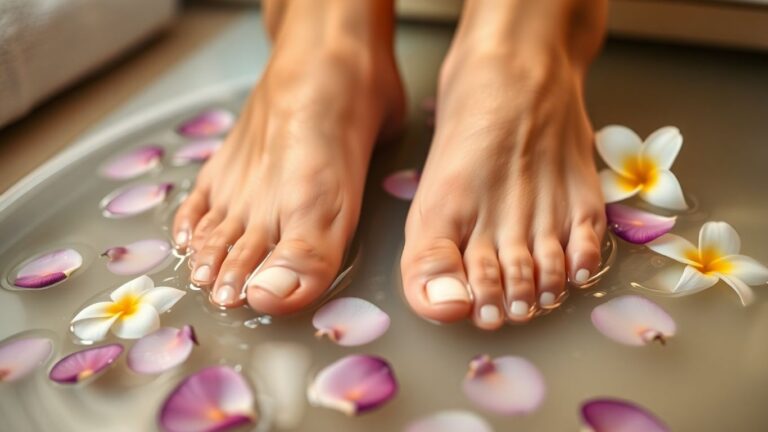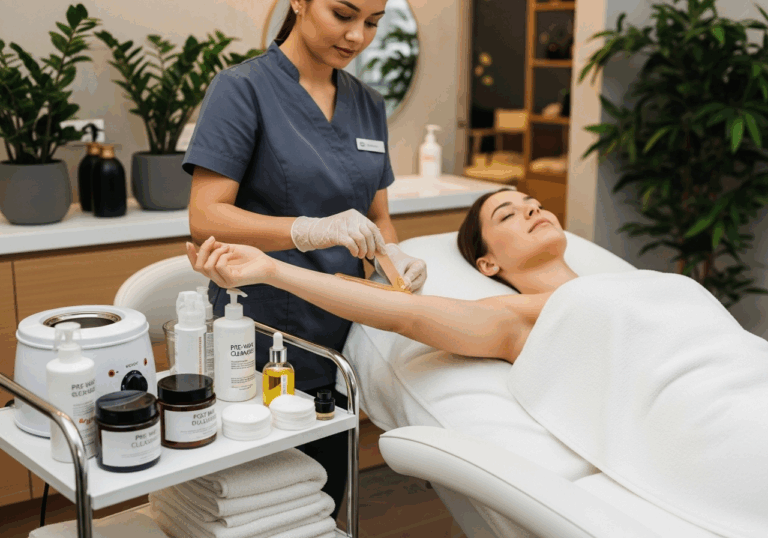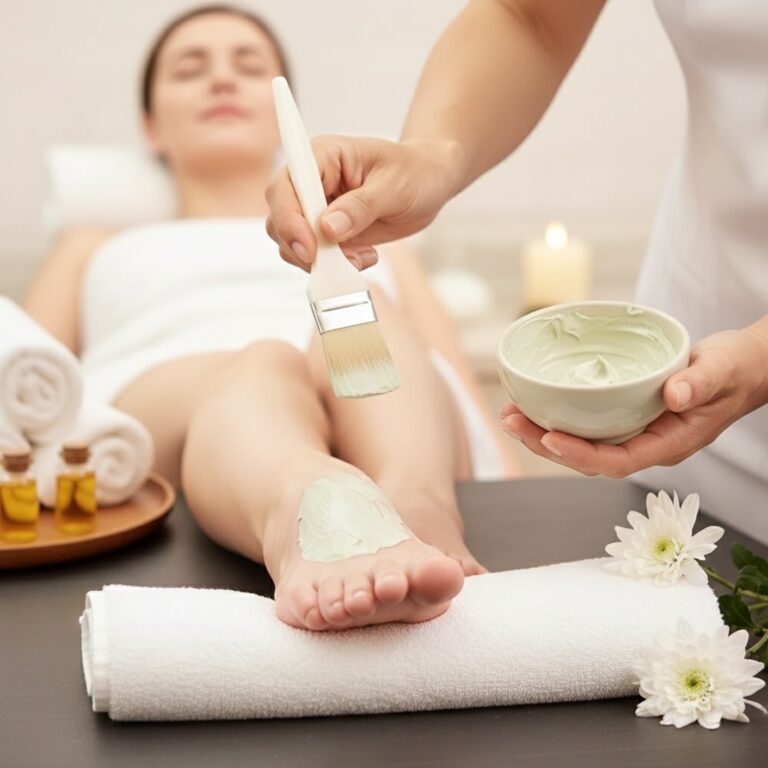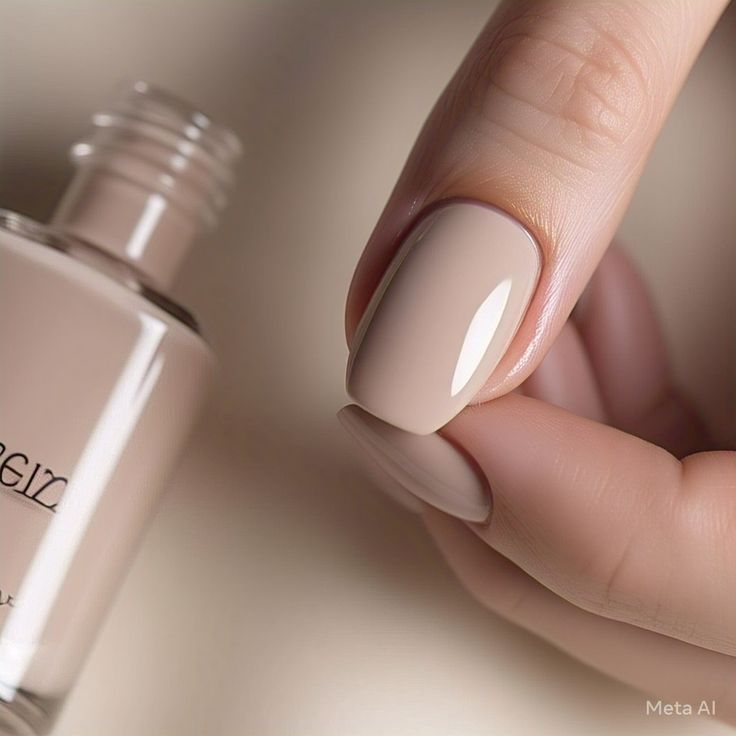Single Hair Extensions: 7 Amazing Benefits You’ll Love
Key Takeaways
What exactly are single hair extensions?
Single hair extensions, also known as individual hair extensions, are tiny pieces of hair that are attached one by one to your natural hair. Think of it like adding individual strands to make your hair look longer and fuller. They can be made from real human hair or synthetic materials.
How do they attach single hair extensions?
There are a few ways! Some use a special glue or keratin bond that’s heated to stick to your hair. Others use tiny beads or tape. The goal is to attach each extension strand very close to your scalp so they blend in naturally and are hard to see.
Can I wash and style my hair with single extensions?
Yes, you usually can! But you need to be extra careful. Use gentle shampoos and conditioners, and try to keep the products away from where the extensions are attached. When styling with heat, use a heat protectant spray and avoid putting the hot tool directly on the bond or tape.
How long do single hair extensions last?
It really depends on the type of extension, how well you take care of them, and your hair’s growth. Some can last a few weeks, while others, with proper maintenance, can last for a couple of months before needing to be moved up or replaced.
Will single hair extensions damage my natural hair?
When applied and removed correctly by a professional, single hair extensions shouldn’t cause lasting damage. However, if they’re not put in right, or if you pull at them too much, they could potentially harm your natural hair. It’s important to follow aftercare instructions closely.
How much do single hair extensions cost?
The cost can vary a lot! It depends on the brand, the type of hair (human vs. synthetic), how many strands you need, and your stylist’s rates. They can be an investment, and you might need to pay for touch-ups or new sets over time.
Understanding Single Hair Extension Basics
What Are Single Hair Extensions?
So, you’re curious about those individual hair extensions everyone’s talking about? Basically, At Paoli Nail Spa they’re tiny little pieces of hair, either real human hair or synthetic, that get attached one by one to your own hair. The whole idea is to add length, volume, or even just a bit of extra oomph to your natural locks. Think of it like adding individual threads to a tapestry to make the whole picture richer. They’re not like those big wefts you might have seen; these are all about precision and blending in super naturally. It’s a way to get that fuller, more dramatic look without going for a drastic chop or a full-on color change. Plus, they can be a real lifesaver if your hair grows slower than you’d like or if it’s naturally on the finer side. It’s a pretty neat way to get that hair goals look without a ton of fuss.
How Single Hair Extensions Are Applied
At Paoli Nail Spa applying single hair extensions is a bit of an art form. Unlike some other methods, these are attached strand by strand. One common way involves using tiny beads, often called micro-links or micro-beads, to secure the extension to a small section of your natural hair. This method is pretty cool because it doesn’t use any heat or chemicals, which is a big plus for your hair’s health. At Paoli Nail Spa use another technique uses a special adhesive that’s cured with a light source, creating a secure bond. The goal with any of these methods is to make the extensions blend in so well that they look like your own hair. It’s all about creating a natural flow and making sure the extensions move with your hair, not against it. Getting the application right is key to making them look and feel natural.
The Seamless Blend of Individual Strands
At Paoli Nail Spa The magic of single hair extensions really lies in how they blend. Because each extension is applied individually, a good stylist can match the color, texture, and thickness to your natural hair almost perfectly. This strand-by-strand approach means there are no obvious lines or bulky attachments. They’re designed to mimic the way your hair grows naturally from the scalp.
This careful placement allows the extensions to move freely with your own hair, giving you that natural bounce and flow. When done right, it’s incredibly hard for anyone to tell where your hair ends and the extensions begin. It’s like your hair just magically got longer and fuller overnight. This natural look is what makes individual hair extensions so popular for those seeking a subtle yet significant change.
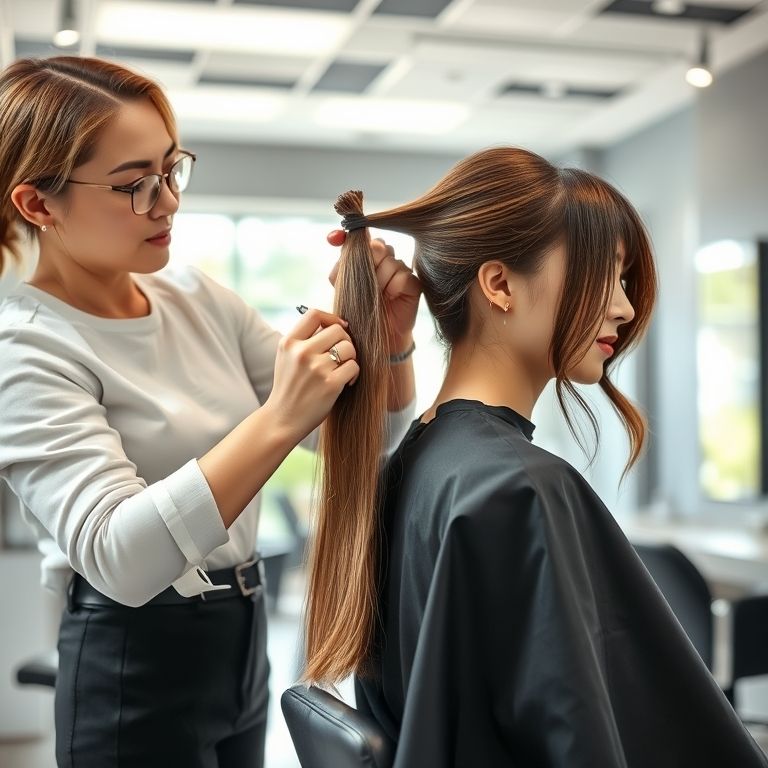
Choosing The Right Single Hair Extension Method
So, you’re thinking about getting individual hair extensions. That’s cool! But before you jump in, there are a few things to consider. It’s not a one-size-fits-all situation, and picking the wrong method could lead to some real headaches. Let’s break down how to pick the best fit for you.
Considering Your Lifestyle and Hair Type
Your daily routine and the kind of hair you already have play a big part in which extension method will work best. Think about how much time you’re willing to spend on your hair each day. If you’re always on the go and prefer a quick routine, some methods might be too much work. On the flip side, if you enjoy a bit of pampering and don’t mind a more involved process, you’ve got more options.
Also, your natural hair’s thickness and texture matter. Some extensions work better on finer hair, while others need thicker hair to hold properly. It’s like trying to attach something light to a flimsy surface versus a solid one – you need the right foundation.
Evaluating Different Application Techniques
There are several ways these individual strands get attached, and each has its pros and cons. You’ve got methods that use tiny bonds, like keratin or microbeads, where individual strands are attached one by one. These can look super natural but might take a while to apply.
Then there are methods that use tape. These are often applied in small sections, sandwiching your natural hair between two pieces of extension. They’re usually pretty quick to put in and lie flat, which is nice for a natural look. However, you have to be careful with certain hair products near the tape.
Some methods involve sewing wefts of hair onto a braided base, which is often called a weave. This is a more involved process and usually requires a professional. It can be a good option for thicker hair and lasts a good while, but it does mean your hair is tied up in braids underneath.
Here’s a quick look at some common types:
- Micro-ring/Micro-loop extensions: Small metal rings are clamped onto your natural hair and the extension. They’re reusable but can sometimes slip if not applied correctly.
- Tape-in extensions: Hair wefts with tape are applied by sandwiching your natural hair. They’re fast and lay flat, good for most hair types.
- Keratin bond extensions (Hot Fusion): Individual strands with a keratin tip are melted and bonded to your natural hair using heat. This is a more permanent option but requires professional application and removal.
- Sew-in extensions (Weaves): Wefts of hair are sewn onto braids made from your natural hair. Best for thicker hair and offers a secure hold.
Professional Consultation For Best Results
Honestly, trying to figure this all out on your own can be overwhelming. The best thing you can do is book a consultation with a stylist who specializes in hair extensions. They can look at your hair, talk about your lifestyle, and explain which methods would be the safest and most effective for you. They’ll also be able to show you examples and give you a realistic idea of the results you can expect. A good stylist can save you a lot of trouble and help you achieve the look you want without damaging your hair.
Don’t just pick the first method you hear about. Take the time to research, ask questions, and get professional advice. Your hair will thank you for it.
The Application Process For Single Hair Extensions
So, you’ve decided to go for individual hair extensions – exciting! But what actually happens when you get them put in? It’s not just a quick clip-in situation, especially with methods like keratin bonds or tape-ins. The whole process is pretty detailed, and it’s good to know what to expect. It’s a strand-by-strand journey to longer, fuller hair.
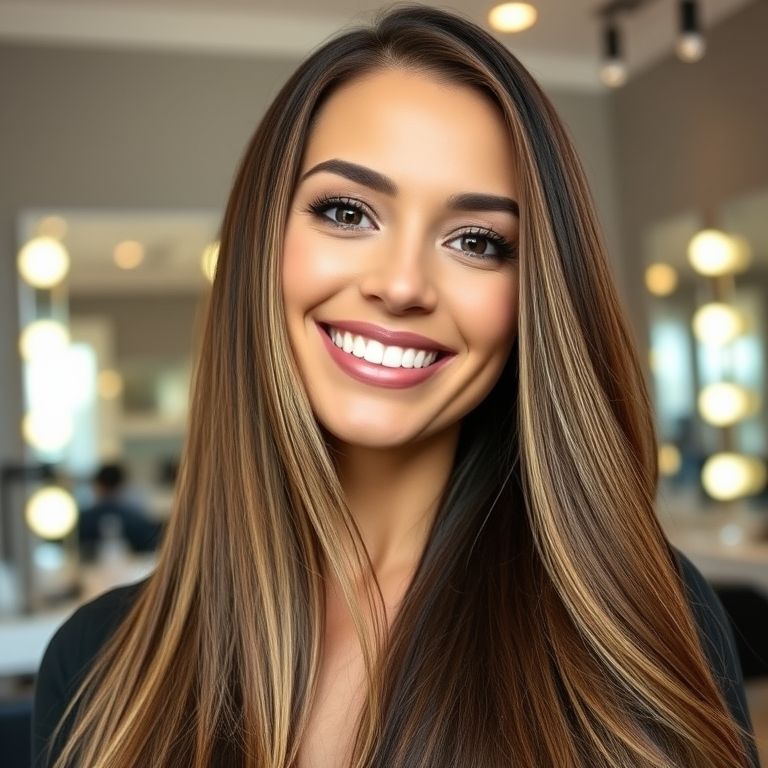
Initial Consultation And Hair Assessment
Before anything gets attached to your head, there’s a chat At Paoli Nail Spa. Your stylist will look closely at your hair. They’re checking things like your natural color, how healthy your scalp is, the length and thickness of your hair, and its texture. This is also your time to talk about what you’re hoping to achieve. They’ll figure out the best color match and discuss how you’ll need to care for the extensions at home. This initial meeting is super important for making sure you get the right look and that the extensions will work well with your hair.
Custom Preparation Of Extension Bonds
Once the consultation is done and the plan is set, Paoli Nail Spa team the extensions themselves get prepped. For some methods, like keratin bonds, the bonds might be customized to match the density of your natural hair. This prep work is often done before your actual application appointment, so everything is ready to go when you sit in the chair.
Strand-By-Strand Application Technique
This is where the magic happens. Your natural hair will usually be washed, but without conditioner, to make sure there’s no oil or residue that could mess with the bond. Then, your stylist will take small sections of your hair, matching the thickness of the extension strand. Using a special tool, they’ll attach the extension to your natural hair, creating a secure seal. This is repeated over and over, section by section, until the desired look is achieved. For tape-in extensions, it’s a bit different – your natural hair is sandwiched between two extension pieces with tape. It’s a meticulous process that takes time.
Blending And Styling For A Natural Finish
After all the extensions are in place, the stylist will trim and blend them with your natural hair. This step is key to making sure everything looks totally natural and moves like your own hair. They’ll cut and shape the extensions to match your current haircut or the style you’re going for. It’s all about making sure no one can tell where your hair ends and the extensions begin. This whole application, from start to finish, can take several hours, depending on how many extensions are being applied and the length you want. If you’re curious about different types of extensions, clip-in hair extensions are a popular temporary option.
The application of individual hair extensions is a detailed process that requires precision. Each strand is carefully attached to your natural hair, creating a look that is both voluminous and natural. Patience during this stage is rewarded with beautiful, flowing locks.
Here’s a quick look at how long some common methods might take:
| Extension Type | Approximate Application Time |
|---|---|
| Keratin Bonds | 3-6 hours |
| Tape-Ins | 40-60 minutes |
| Weaves | 1-3 hours |
Caring For Your Single Hair Extensions
So, you’ve got these awesome Single hair extensions At Paoli Nail Spa, and now you’re probably wondering how to keep them looking great. It’s not super complicated, but there are definitely a few things to keep in mind. Think of it like taking care of a really nice plant – a little attention goes a long way.
Post-Installation Care And Bond Sealing At Paoli Nail Spa
Okay, first things first. After you get your extensions put in, you need to give those bonds some time to really set. Don’t wash your hair for at least 48 hours. Seriously, resist the urge. This waiting period is super important because it lets the bonds seal up properly. If you jump in too soon, you risk loosening them, and nobody wants that. It’s all about giving them the best chance to stick around for the long haul.
Washing And Styling With Extensions
When it’s finally time to wash, treat your hair gently. You’ll want to use shampoos and conditioners that are sulfate-free and specifically made for extensions, especially if you have keratin bonds. Focus the shampoo on your scalp and let the suds run down the hair shaft. When you condition, keep it away from the bonds themselves – think mid-shaft to the ends. This helps prevent the bonds from getting slippery, especially as they start to grow out a bit. After washing, pat your hair dry with a towel instead of rubbing it vigorously. Then, always blow-dry your hair, paying special attention to the bonds. This helps keep them secure and prevents them from weakening.
Brushing Techniques For Extension Longevity
Brushing is another area where you need to be a bit mindful. Forget those brushes with tiny round tips; they can snag on your bonds. Instead, opt for a brush with loop bristles, or even a boar bristle brush. When you brush, start from the ends of your hair and work your way up towards the roots. Always support the bonds with your hand as you brush near them. This gentle approach helps prevent pulling and keeps your extensions from getting tangled.
Sleeping And Nighttime Care For Extensions
Overnight care is pretty simple but makes a difference. Never go to bed with wet hair; it’s just asking for tangles and potential bond damage. Instead, loosely braid your hair or put it in a low ponytail. This keeps your extensions from getting all messed up while you sleep. If you have a silk pillowcase, even better! It’s smoother and causes less friction on your hair and extensions.
Taking care of your individual hair extensions is mostly about being gentle and using the right products. It’s not a huge overhaul of your routine, just a few tweaks to make sure your investment stays looking fabulous. Pay attention to the bonds, use gentle washing techniques, and brush carefully. Your hair will thank you for it!
Maintaining The Beauty Of Single Hair Extensions

So, you’ve got these awesome single hair extensions, and now you want them to look good for as long as possible, right? It’s not super complicated, but there are definitely a few things to keep in mind so you don’t mess them up. Think of it like taking care of a really nice plant – a little attention goes a long way.
Products To Use And Avoid Near Bonds
This is a big one. The stuff you put on your hair can make or break your extension bonds. You want to stick with products that are gentle and won’t break down the adhesive or keratin holding your extensions in place. Sulfate-free shampoos and conditioners are your best friends here. Sulfates are like tiny little troublemakers that can strip your hair and, more importantly, weaken those bonds.
When you’re washing, focus on your scalp with the shampoo. Let the suds run down the hair shaft, but try to keep the conditioner away from the roots and the bonds themselves. Conditioner is great for your natural hair, but it can make the bonds slippery. Think of it like trying to glue something and then getting oil on the glue – not a good look.
Here’s a quick rundown:
- Use: Sulfate-free shampoos and conditioners, lightweight styling products, heat protectants.
- Avoid: Products with heavy oils, alcohol-based sprays, anything that feels super sticky or waxy near the bonds.
The key is to treat the area where your extensions attach with extra care. It’s the anchor point, and you want it to stay strong and secure.
Heat Styling Considerations
Okay, so you love your curling iron or straightener. I get it. You can still use them, but you need to be smart about it. High heat directly on the bonds is a no-go. It can melt or damage them, leading to extensions falling out or looking a bit sad.
When you’re heat styling, always, always use a heat protectant spray. It’s like a little shield for your hair and the extensions. Then, use your tools on a medium or low heat setting. Keep the heat moving; don’t let it sit on one spot for too long, especially near the bonds. It’s better to go over a section a couple of times on a lower heat than to blast it once on high.
Protecting Bonds From Damage
Beyond the products and heat, there are a few other ways to keep your bonds happy. When you’re brushing your hair, be gentle. Start from the ends and work your way up towards the roots. Use a brush with widely spaced bristles or a loop brush – those tiny round-tipped ones can snag on the bonds. When you get near the attachment points, hold your hair above the bond with one hand and brush below it with the other. This gives the bond some support and prevents pulling.
Also, try to avoid excessive friction. Think about activities that might cause a lot of tugging or pulling at your hair. If you’re going swimming, especially in saltwater or chlorinated pools, rinse your hair with fresh water beforehand and consider wearing a swim cap. Sleeping with your hair in a loose braid or ponytail can also help prevent tangles and stress on the bonds overnight. And if you can swing it, a silk or satin pillowcase is way gentler on your hair than cotton.
Cost And Longevity Of Single Hair Extensions

So, you’re thinking about getting single hair extensions, huh? That’s awesome! But before you jump in, let’s talk about the money part and how long these beauties are going to last. It’s a bit of an investment, for sure, but knowing what you’re getting into is key.
Understanding The Investment In Extensions
When you’re looking at single hair extensions, like those individual keratin bonds or micro-links, the upfront cost can seem a little steep. This is because you’re paying for the quality of the hair itself, the skill of the stylist applying each tiny strand, and the time it takes to get that super natural, blended look. It’s not just about buying hair; it’s about a detailed application process. The initial cost is often higher than other methods because of the precision involved. Think of it like custom tailoring versus buying off the rack – you’re getting something made just for you.
Comparing Costs With Other Extension Types
It’s helpful to see how single strand extensions stack up against other popular methods. For instance, clip-ins are usually the cheapest upfront, but you have to put them in and take them out yourself every day, and they don’t last as long in terms of wear. Tape-ins might have a lower application cost than individual bonds, but they need to be moved up every 6-8 weeks. Wefts, where hair is sewn in, can also have a different cost structure. With single strand extensions, you’re paying for that very natural, undetectable finish, which often translates to a higher price tag per application.
| Extension Type | Typical Upfront Cost | Maintenance Frequency | Estimated Lifespan (with care) |
|---|---|---|---|
| Single Strand (Keratin/Micro-link) | $$$ | Varies (move-up/re-tip) | 3-6 months (hair can be reused) |
| Tape-Ins | $$ | 6-8 weeks (move-up) | 6-9 months (hair can be reused) |
| Wefts (Sew-in) | $$ | 6-8 weeks (move-up) | 6-12 months (hair can be reused) |
| Clip-Ins | $ | Daily (apply/remove) | Varies (depends on quality/care) |
Factors Affecting Extension Lifespan
How long your gorgeous extensions stick around really depends on a few things. First off, the quality of the hair matters a lot. Human hair extensions, especially Remy hair, will last way longer and look better than synthetic ones. Then there’s how you treat them. If you’re rough with your hair, use harsh products, or expose the bonds to excessive heat, they won’t last as long. Your natural hair’s growth rate also plays a role; as your hair grows, the extensions will need to be moved up or re-tipped to keep them looking fresh and to avoid tangling.
- Hair Quality: 100% human hair lasts longer than synthetic.
- Aftercare Routine: Gentle washing, proper brushing, and avoiding certain products are key.
- Styling Habits: Frequent heat styling and tight hairstyles can shorten lifespan.
- Professional Maintenance: Regular salon visits for move-ups or re-tipping are important.
Taking good care of your single hair extensions isn’t just about keeping them looking good; it’s about protecting your investment. Following the stylist’s advice on products and techniques will make a big difference in how long you can enjoy your fuller, longer hair.
Wrapping It Up
So, there you have it. We’ve gone over the different ways you can add some extra flair to your hair, from the quick clip-ins to the more involved weaves and tape-ins. It’s pretty cool how many options there are these days to change up your look without a huge commitment. Whether you’re after a bit more volume for a special occasion or just want to experiment with longer locks, there’s likely a method out there for you. Just remember to think about your hair type and how much time you want to spend on upkeep. Doing a little homework or chatting with a stylist can really help you pick the best fit. And hey, a little extra hair can be a fun way to boost your confidence, right?
Frequently Asked Questions
What exactly are single hair extensions?
Single hair extensions, also known as individual hair extensions, are tiny pieces of hair that are attached one by one to your natural hair. Think of it like adding individual strands to make your hair look longer and fuller. They can be made from real human hair or synthetic materials.
How do they attach single hair extensions?
There are a few ways! Some use a special glue or keratin bond that’s heated to stick to your hair. Others use tiny beads or tape. The goal is to attach each extension strand very close to your scalp so they blend in naturally and are hard to see.
Can I wash and style my hair with single extensions?
Yes, you usually can! But you need to be extra careful. Use gentle shampoos and conditioners, and try to keep the products away from where the extensions are attached. When styling with heat, use a heat protectant spray and avoid putting the hot tool directly on the bond or tape.
How long do single hair extensions last?
It really depends on the type of extension, how well you take care of them, and your hair’s growth. Some can last a few weeks, while others, with proper maintenance, can last for a couple of months before needing to be moved up or replaced.
Will single hair extensions damage my natural hair?
When applied and removed correctly by a professional, single hair extensions shouldn’t cause lasting damage. However, if they’re not put in right, or if you pull at them too much, they could potentially harm your natural hair. It’s important to follow aftercare instructions closely.
How much do single hair extensions cost?
The cost can vary a lot! It depends on the brand, the type of hair (human vs. synthetic), how many strands you need, and your stylist’s rates. They can be an investment, and you might need to pay for touch-ups or new sets over time.

